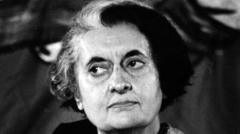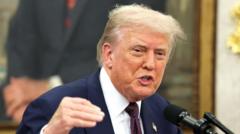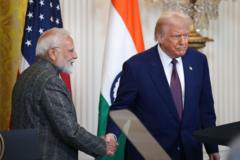Historian Srinath Raghavan's latest book uncovers a critical moment in India’s political history during the 1975 Emergency, revealing attempts by Indira Gandhi's administration to transition toward a presidential governance model. While the momentum did not culminate in substantive reform, the effort reflected significant tensions between authoritarianism and democratic principles.
Revisiting India's Struggle for Presidential Governance During the Emergency

Revisiting India's Struggle for Presidential Governance During the Emergency
A deep dive into the political ambitions and constitutional proposals that embedded a presidential drift in India during the Emergency period under Indira Gandhi.
During the mid-1970s, India witnessed a dramatic shift under Prime Minister Indira Gandhi’s imposition of the Emergency, marked by the suspension of civil liberties and the jailing of political dissenters. Historian Srinath Raghavan explores this transformative era in his new book, "Indira Gandhi and the Years That Transformed India," detailing an ambition within Gandhi's government to reshape the nation’s democratic framework into a more centralized presidential system.
According to Raghavan, the push towards a presidential model—largely inspired by Charles de Gaulle’s approach in France—arose in September 1975, when BK Nehru, a close aide and seasoned diplomat, praised the Emergency as a societal shift driven by popular support. Nehru articulated a need for a directly elected president possessing the authority to make decisions devoid of parliamentary constraints. He argued that such a model would empower leadership to implement "tough, unpleasant, and unpopular decisions" without the burdens of public approval.
Nehru's radical vision included proposals for a single seven-year term for the president, proportional representation in legislative bodies, an executive largely independent of parliamentary checks, and significant constraints on judicial authority. He even suggested eliminating the justiciability of certain fundamental rights, positioning Gandhi to enact these sweeping constitutional changes amidst the political turbulence of the time.
Supporters of Nehru, including influential Congress leaders, rallied behind these ideas, with some suggesting extreme measures such as lifetime presidential power for Gandhi herself. However, the gravity of these suggestions prompted Gandhi to approach with caution, allowing explorations of the proposals while highlighting the necessity for discretion in their dissemination.
Emerging from these discussions, a secretive document proposed a reformation of India’s constitutional structure: among its recommendations were an executive with unprecedented powers, including direct influence over judicial appointments and legislative matters. The resultant Forty-second Amendment Act, passed in 1976, increased parliamentary influence while simultaneously curtailing judicial review, centralizing authority, and limiting the role of checks and balances critical to a functional democracy.
Importantly, while this amendment did not implement a full-fledged presidential system, its provisions showcased an ominous shift toward authoritarian governance, diluting the fundamental principles of India’s democracy and prompting journalistic and scholarly critiques regarding its implications for the future.
The aggressive political restructuring came to a halt in 1977 when the Janata Party, united against Gandhi, successfully dismantled many of the Forty-second Amendment's more authoritarian elements, restoring vital democratic checks. Following her return to power in 1980, discussions regarding a presidential system resurfaced, particularly as Gandhi contemplated the presidency following a potential vacancy, reflecting an enduring intrigue with the idea.
The fluctuating aspirations for a presidential governance model, alongside the resilient nature of India’s parliamentary democracy, raised pivotal questions about the nation’s political identity during periods of crisis. Ultimately, the assassination of Gandhi in 1984 extinguished ongoing debates about her governance style, solidifying India’s status as a parliamentary democracy and leaving the conversation about presidential governance unfulfilled.




















